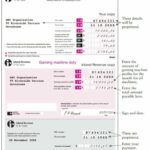As you’re learning poker, you’ve probably already figured out that stack management is an art. But it’s not as hard as it might seem at first glance. So, the first thing you need to do is calculate how many blinds are equivalent to our stack. Simply divide the number of chips you have by the size of the big blind. For example, if you have 2350 chips and a 50/100 blind, then you have 23 blinds. In tournaments, the stack changes rapidly as the blinds go up all the time. In the beginning, it is often about 150-200B, but in the later stages of the tournament, a stack of 30 blinds is considered a big stack.
What is the stack in poker and how do you manage it? Before you enter a hand, you need to estimate the effective stack. The effective stack is the smallest stack in the hand. If you have 40 blinds and your opponent has 20, an effective stack is 20 big blinds. You can’t win or lose more than 20 blinds in this hand.
Big stack (45bb+)
If you have that kind of stack, then play your normal poker. With a big blind, you have a lot of tricks available to you: restyle and 4bet to bluff, call in position, and play speculative hands and short pairs. Simply put, just show your best poker. The number of chips doesn’t hold you back in any way. However, watch your stack size! If your stack is smaller than your comfort stack after increasing the blinds or losing a couple of hands, remember to rebuild!
Above Average (35-45b)
With this stack you are still safe. You are not in danger of a quick flop, and you can play normal poker. However, it is worth realizing that, having made 4 bet, you cannot bust on the opponent’s all-in, you should not enter the game by raiding on early positions, and you should call 3 bets only on a tight range. The beginner’s poker school advises against wasting chips on unnecessary hands. Remember: one busted hand can leave you with a short stack.
Average Stack (23-35b)
Stack Management for Dummies With this stack, you have to think carefully about every raise. Play very tight in the early positions and aggressive in the late positions. Remember: your stack is maximally uncomfortable for opponents, who care a great deal about playing you for all their chips. So don’t be afraid to resteal. Opponents with stacks a little bigger than yours will be very tight, so we need to use that to win chips. Once you find yourself in this situation, you shouldn’t panic. You’re still in the game.
Under the average (13-22b)
You need to be as careful as possible in this situation. You are not in danger of leaving the tournament quickly, so at this stage the main thing is patience. Wait for good hands. Remember: if you made a raise, you have no right to fold again – you will have to go all-in in any situation. That’s why only very strong hands are good for a raid, like AA, AK, KK, QQ. With other good hands it is better to go all-in. Also, don’t forget that if a player with a large stack raised from a late position, he can still call all-in. Accordingly, restacking from the blinds is a very effective technique in such stacks.
Short (5-13b)
So, the situation didn’t work out in your favor. You had no luck and ended up with a very short stack. As long as you have a few blinds, you can’t give up hope. Don’t forget that 2012 World Champion Greg Merson was left with two big blinds during the tournament! He didn’t give up and was able to get back in and win. Many new players in this situation tend to lose their chips quickly. Use the push-fold ranges for the CIS. Play only all-in, bet narrowly early and wide late, and let luck be with you!
Here is an example of a game – Cautious Playing with a Big Stack
- No Limit Hold’em Tournament
- Blinds: 100/200
- Large stack 8500, Medium stack 5000, Small stack 1400
PREFLOOD. One player with a medium stack limits and the player with a big stack raises to 600. You are a medium stack player and get pocket :
You decide to call, with a plan to throw out on a limper’s draw. However, the player in the first position just called, after the blinds dropped their cards. Three players are left in the game.
FLOP. The flop came out at 2100 in the pot. The player in first position plays check in poker and the player with the big stack bets 1200, the turn goes to you:
The bet is too big, you only have 4400 chips so no call. You have two options to choose from: all-in or pass. It all depends on your opponent’s style. If he is very aggressive and he is inclined to place a continuation bet on any flop, then the best option is to go all-in. If your opponent is tight, then the best option is to fold. You see that your opponent is very aggressive and you call all-in. The first player immediately folds, the opponent with a big stack also folds, and you significantly increase your stack.









COMMENTS